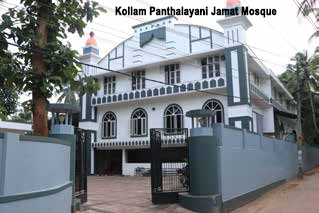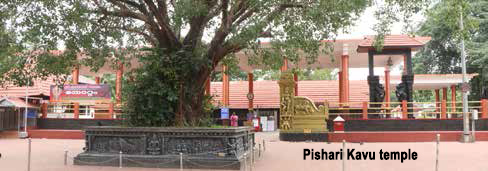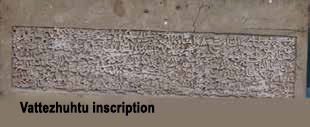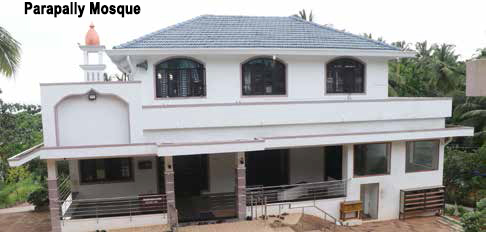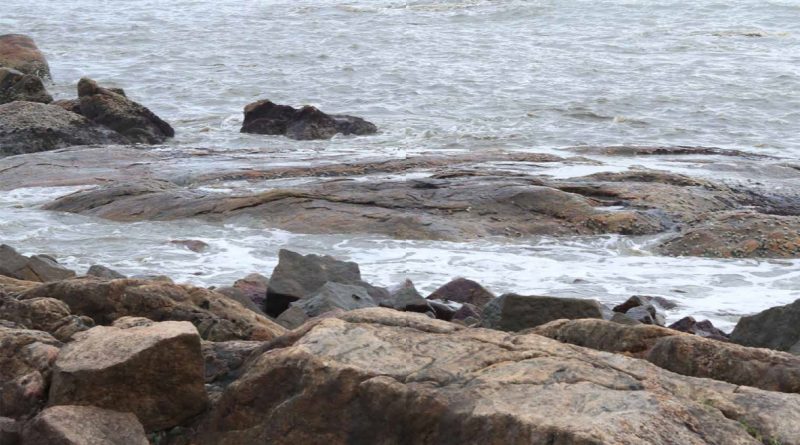Echoes of Kerala’s Past
– Prof. Vasisht M.C.
Historian
The villages of Kerala stand as rich chronicles of the past, waiting to be discovered. N.S.Madhavan, a renowned Malayalam novelist, once aptly remarked that Malayalis sleep atop a layered quilt of history. Indeed, every shovelful of Kerala soil could reveal a nugget of our storied past. This is particularly true for the northern Kerala villages, repositories of history that are nothing short of an open-air museum for tourists, especially those who journey across oceans to explore the charm of God’s own country. Set on the emerald Western coast of erstwhile Malabar, Kollam or Panthalayani Kollam, a tranquil village, hides an illustrious past that yearns to be explored, especially by our foreign guests. Often termed as a forgotten medieval port, Panthalayani Kollam resides within the boundaries of today’s Koyilandi municipality in Kozhikode, Kerala. The once-thriving port town of Koyilandi, formerly known as Panthalayani Kollam, ranks among the oldest ports in southern India. The village encompasses five desoms: Panthalayni, Kovikkandy, Kothamangalam, Kuruvangad, and Peruvattur.
A testimony to its ancient roots, a Megalithic burial site from 500 BCE to 500 CE is nestled in KuttattuKunnu, aptly named the ‘western hill.’ An urn burial linked to the Megalithic culture from the 5th century also echoes tales of a bygone era. Barely 26 km north of Calicut, Panthalayani Kollam spreads across an area of 537.96 acres. Once a bustling hub of trade, today it stands as a serene village, its legacy discreetly recorded in medieval Arab, Chinese, and European accounts of the Malabar coast. Epigraphs from the 10th and 11th centuries narrate the commercial importance of this place, underscoring its reputation as a trading centre as early as the 10th century CE. During the 16th century, the village, a major Muslim centre, fell under a Portuguese attack. For a time, the port served as the nervecentre of the famed naval commanders of the Zamorin, the KunjaliMarakkars.
This erstwhile thriving port was the scene of their valiant stand against the colonial intruders. Although the Portuguese onslaught left the city weakened, its historical resonance endures. Chinese connections were also prevalent in this port city. Evidence of their presence is found in the form of medieval Chinese porcelain unearthed by Indian scholars. Yet, the heritage tourism potential of Panthalayani remains largely untapped, its significance not fully realized by its own people. This was the port that welcomed Vasco Da Gama and his crew in the last week of May 1498. From Idrisi to Ibn Batuta, this was a regular haunt of Arab traders, who referred to the port as ‘Fandarina.’
The rugged beauty of the Parapalli rocky beach remains a hidden gem, poised to enchant visitors with its natural allure. When in Panthalayani, be sure to visit the Pisharikav Temple. Located amidst the Hindu settlements, it’s a hub for devotees from far and wide who come to worship the goddess Bhadra Kali. Linked to the EttuveettilPillais, the infamous feudal lords who plotted against Marthanda Varma, the temple’s annual festival in the Malayalam month of Meenam (March-April) is a spectacle to behold. Just a stone’s throw away from the Pisharikav Temple stands the Nagaraesawara Siva Temple, a shrine dedicated to Lord Siva. The name translates to the ‘lord of the city,’ hinting at the area’s once-thriving commercial activity. Additionally, the Parapalli Mosque is a testament to the region’s Muslim heritage, believed to be the second mosque constructed by Malik Ibn Dinar after Kodungallur. The mosque’s expansive graveyard and nearby Mansions of Muslim Joint Families still echo the Muslim legacy of the area. The Kollam Jamat Mosque on the national highway 66, and the Kadalur Point lighthouse, a British-era construction, are worth visiting. The latter, with its 34-meter high stone masonry tower, serves as an iconic symbol of the area. Panthalyani Kollam’s rocky Parapalli beach and Parapalli mosque complex promise a visual treat, demonstrating the potential for developing heritage or historical tourism. The echoes of its rich history may be silent, but with the right focus, this tranquil village could soon wake from its slumber to reveal its vibrant past to the world.
-Photos: Praveen V.P.,
Panel Photographer I&PRD
